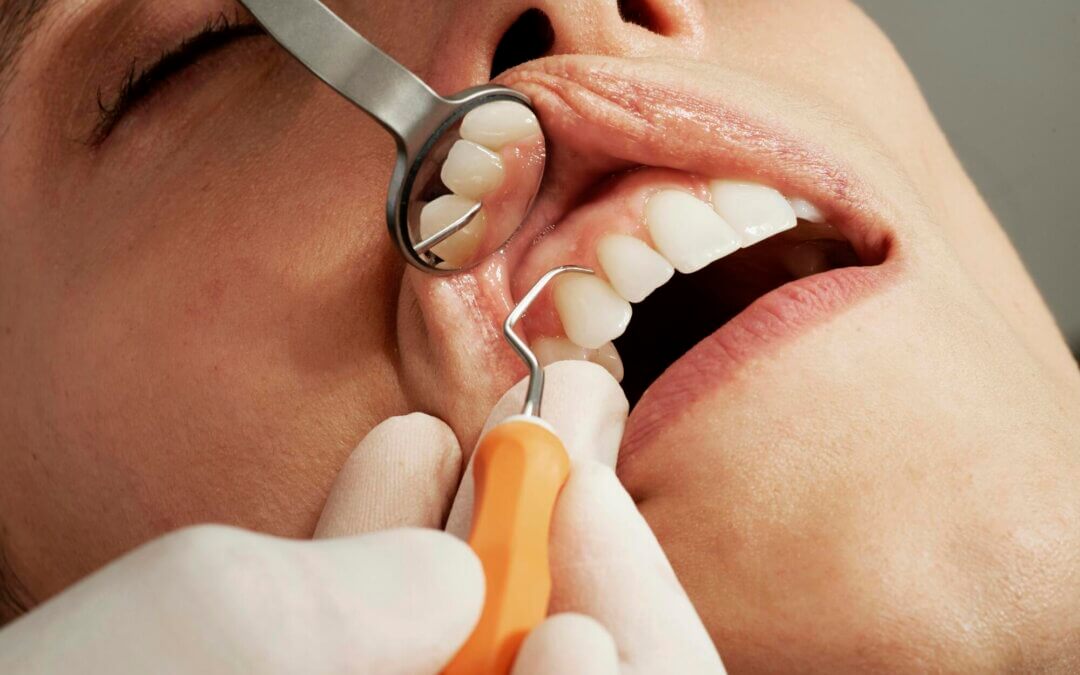Dental fear is real and common, stopping between 9% and 20% of people from visiting a dentist. Despite the fear they may induce, regular dental visits are crucial for maintaining your oral health.
One of the key benefits is that your dentist is trained to detect decay at its earliest stages, potentially preventing more serious issues down the line. Dentists understand the stages of tooth decay and know that treating the problem at an early stage is the best option. However, tooth decay can develop regardless of your age.
Therefore, learning the stages of tooth decay is helpful. Continue reading to learn the five stages.
Stage 1: Enamel Demineralization
The initial stage of decay affects a small part of a tooth and is the hardest for a dentist to detect without X-rays. Dentists call this enamel demineralization.
Enamel is the outermost covering of a tooth. It’s there for protection but can wear away with use, age, and failure to brush and floss your teeth. It primarily happens from bacteria in your mouth.
Everyone naturally has bacteria in their mouths. The bacteria feed on sugars from the foods and beverages you consume. When bacteria feed on sugar, they produce acid.
When this begins occurring, you might experience a few signs, such as white spots on your teeth or an increase in tooth sensitivity.
During a dental appointment, a dentist may spot this issue by seeing white spots. They may also find it by feeling each tooth with a dental tool called a scaler. Dentists poke this on teeth, looking for sticky spots.
Decay begins with a small sticky spot on a tooth. If you suspect you have stage one decay, you may want to find a dentist. If left unaddressed, it moves to stage two.
The bacteria that causes decay is the same material causing periodontal disease. This disease, like decay, starts small and gradually worsens.
Stage 2: Enamel Decay
Decay begins with acid, which eats away at a tooth. After it breaks down the enamel, it moves into other layers of the tooth. During the second stage of tooth decay, your dentist will notice brown spots on a tooth.
The decay begins breaking down the tooth, causing holes in your teeth. At that point, you will need to schedule a dental visit. The decay will continue spreading throughout the tooth and to other teeth if left untreated.
You might feel some pain with a tooth during this stage. You’ll also notice an increase in tooth sensitivity. However, dentists can fix teeth with stage two decay.
A dentist repairs a tooth with enamel decay by removing the affected portion of the tooth. After removing it, the dentist fills the hole with a dental filling. Finally, the dentist smooths the tooth and ensures a good bite.
Stage 3: Dentin Decay
Untreated stage 2 decay moves into stage 3 decay. During this stage, the decay moves past the tooth’s enamel and into the tooth’s inner layers. The next layer it affects is the dentin.
Dentin is underneath a tooth’s enamel. While enamel is hard and protective, dentin is softer. You’ll find nerves and tissue in the dentin layer.
When decay enters a tooth’s dentin layer, you will likely experience more pain and sensitivity. These feelings might be enough to encourage you to contact a dentist.
Stopping the decay at this point is crucial. Failure to do so can lead to much deeper and more painful problems.
Luckily, a dentist can fix tooth decay during this stage. It might require removing a larger portion of the tooth, but it’s fairly common.
Stage 4: Pulp Infection
As mentioned, there are nerves in a tooth’s dentin. The nerves spread from this location to other areas of your mouth, including the tooth’s roots.
Unfortunately, untreated tooth decay in the dentin layer greatly increases your chances of developing a pulp infection. This occurs when bacteria from decay get into the tooth’s inner pulp and enter the tooth’s roots.
A pulp infection is painful and generally causes extreme throbbing. To fix the problem, you may need a root canal procedure. This procedure cleans the pulp, removing the bacteria causing the infection.
A root canal is more intense than a cavity removal procedure, but it’s usually necessary to save a tooth at this stage. You can ask your dentist about alternative dental services, but there might not be any other option.
Stage 5: Tooth Abscess
The final stage of tooth decay is a tooth abscess, which is a serious infection in a tooth. A tooth abscess is painful and can cause swelling and throbbing.
Your dentist will evaluate your treatment options if your decay reaches this point. If a root canal is not sufficient, they might recommend removing the tooth.
If you must remove the tooth, you will also need cosmetic dental services to replace it. You can replace a missing tooth with a bridge, implant, or removable partial dentures.
Preventing Tooth Decay Is the Best Treatment Plan
Tooth decay progresses, starting small and becoming more serious as it remains on a tooth. Dentists can treat tooth decay with fillings, root canals, and extractions.
However, preventing it is the best choice. If you want to prevent it, you should:
- Develop thorough brushing habits
- Floss your teeth daily
- Attend routine dental visits
- Treat oral problems quickly
- Consume less sugary and starchy foods and beverages
You can also learn about tooth decay prevention by visiting a dentist. Your dentist can teach you other ways to protect your teeth to avoid developing decay.
Learn the Stages of Tooth Decay
As you see, there are five stages of tooth decay. The most preferred way to treat decay is through prevention. Excellent oral hygiene habits increase your chances of preventing cavities.
Dentists can fix most teeth with decay. However, the process is more challenging as a tooth progresses to a higher stage.
Routine dental visits also make a positive impact on your oral health. Visiting a dentist might invoke fear, but it will help protect your teeth.
Skyridge Dental is made up of a team of dedicated dentists. We care about your oral health and offer gentle and comprehensive services. We’re conveniently located in Lakeway, TX.
Reach out today to learn more about our services.


Recent Comments